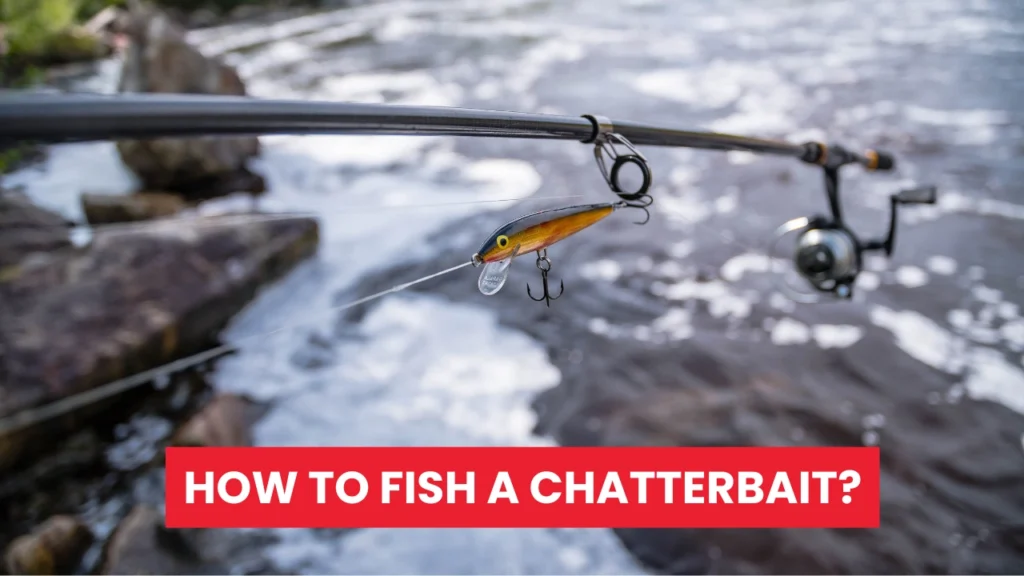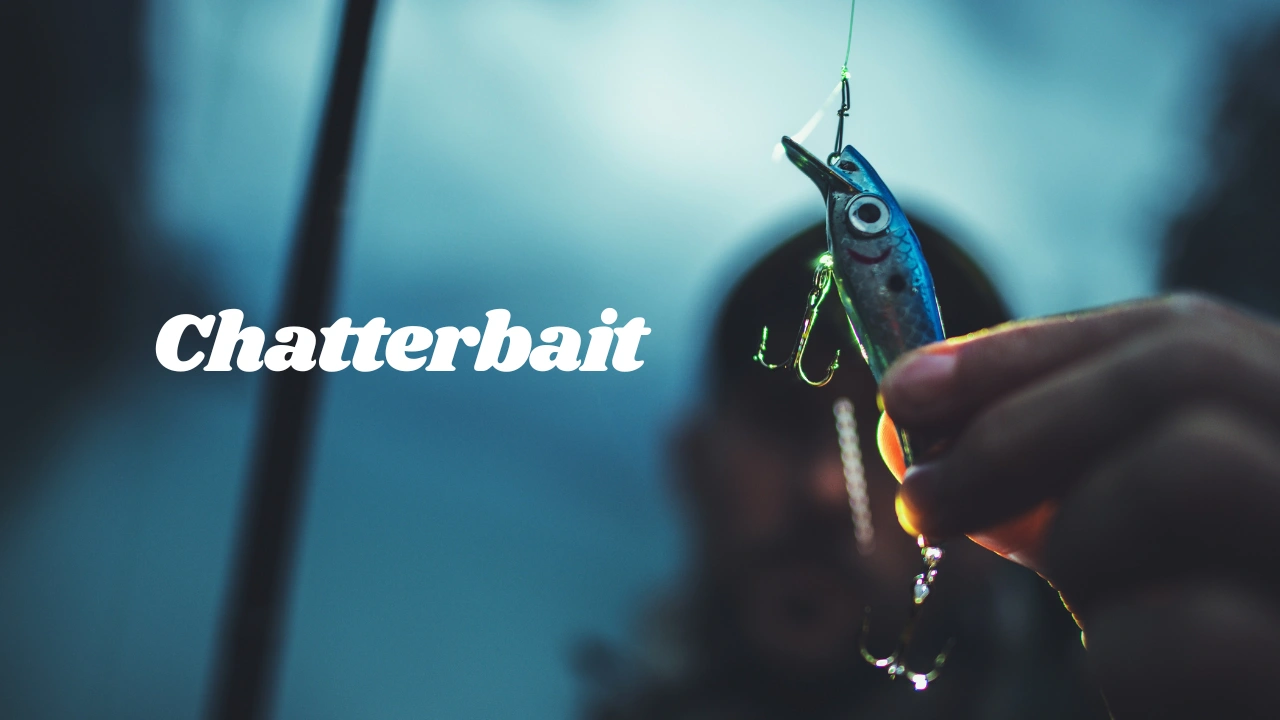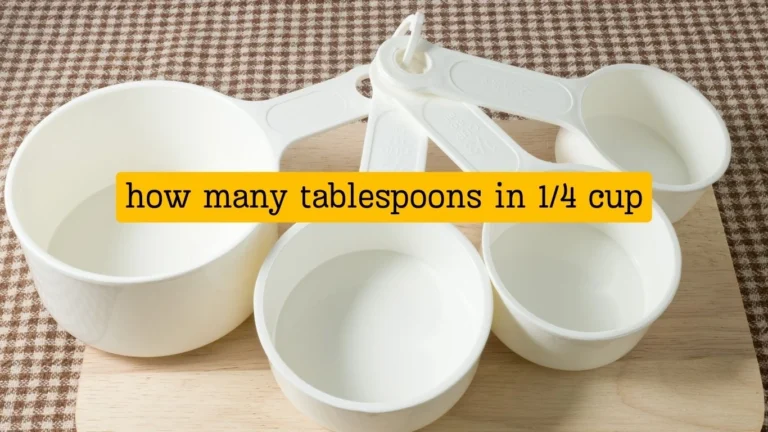Chatterbait Fishing Guide: Catch More Bass with Pro Tips
If you’re an angler looking to catch more bass, you’ve probably heard about Chatterbaits. These lures have become a game-changer in the fishing community due to their vibration, sound, and versatility. But what exactly makes a Chatterbait so effective, and how can you use it to maximize your success on the water?
This guide will walk you through everything you need to know about it—from how they work to the best fishing techniques, colors, trailers, and setups. Whether you’re a beginner or an experienced angler, this article will help you understand Chatterbaits and use them like a pro.
What is a Chatterbait?
It, also known as a bladed swim jig or vibrating jig, is a fishing lure designed to attract largemouth bass, smallmouth bass, and other predatory fish. It features a unique hexagonal blade that creates intense vibration and sound, mimicking distressed baitfish.
Why Do Bass Love Chatterbaits?
Bass rely on sound and vibration to locate prey, especially in murky water or around dense vegetation. The vibrating action of a Chatterbait triggers a reaction strike, making it one of the most effective lures for catching big bass.
How it Works?
When retrieved through the water, the metal blade in front of the jig vibrates rapidly, producing a pulsating movement. This mimics the erratic behavior of a fleeing baitfish, which bass find irresistible. The blade also generates noise, making it easy for bass to detect even in low-visibility conditions.
Best Conditions for Fishing a Chatterbait
Chatterbaits work in various water conditions, but they excel in stained or murky water where visibility is limited. They are highly effective in vegetation-rich lakes, submerged grass beds, rocky areas, and shallow waters.
When to Use Chatterbaits
- Spring: Bass are aggressive before spawning. Use a red or orange chatterbait to mimic crawfish.
- Summer: Fish deeper using a slow retrieval along weed lines and drop-offs.
- Fall: Bass feed heavily before winter. Burning a chatterbait near the surface is highly effective.
- Winter: Use a slow, bottom-crawling technique with a bulky trailer to tempt lethargic bass.
How to Fish a Chatterbait?

1. Just Below the Surface
This method works well in the fall when bass are feeding near the top. Retrieve the lure quickly but steadily, keeping it just below the surface to create a visible wake. If you see V-shaped ripples, you’re retrieving at the right speed.
2. Around Grass and Vegetation
It shine in grass-heavy areas. Use a slow retrieve, letting the lure bump against submerged grass. If it snags, give it a quick snap to free it—this often triggers an aggressive strike.
3. Bouncing Off Structures
Like a crankbait, it becomes more effective when it makes contact with obstacles. Deflect it off rocks, logs, and docks to create an erratic motion that excites bass.
4. Dragging Along the Bottom
For deeper waters, let the Chatterbait sink to the bottom and use a slow “hop and drag” technique. Lift the rod tip slightly and let the bait fall again, mimicking a crawfish scurrying along the lake floor.
Choosing the Right Chatterbait Color
The right color depends on water clarity and the natural forage in your fishing area.
| Water Condition | Best Colors |
|---|---|
| Clear Water | White, Silver, Natural Shad |
| Murky/Stained Water | Black/Blue, Junebug, Red |
| Low Light Conditions | Chartreuse, Bright Colors |
| Crawfish Forage | Brown, Green Pumpkin, Orange |
Pro Tip:
If bass are feeding on shad, use a white or silver chatterbait. If they’re feeding on bluegill or crawfish, opt for darker colors like green pumpkin.
Selecting the Best Chatterbait Trailer
A trailer is an essential part of a Chatterbait setup. It enhances the lure’s profile, action, and realism.
Best Trailer Types
- Swimbait Trailers (Keitech Swing Impact, Z-Man Razor Shad) – Great for a realistic swimming action.
- Craw Trailers (Berkley Pit Boss, Strike King Rage Craw) – Imitates crawfish for bottom fishing.
- Fluke-Style Trailers (Zoom Super Fluke) – Works well for a subtle, natural motion.
| Trailer Type | Best For |
|---|---|
| Swimbait | Open water, imitating baitfish |
| Craw | Bottom-hopping techniques |
| Fluke | Subtle movements in clear water |
Best Rod and Reel Setup
Rod Selection
A 7’0″ to 7’4″ Medium-Heavy Casting Rod is ideal for fishing Chatterbaits. Graphite rods provide better sensitivity, while glass rods offer a parabolic bend that helps prevent lost fish.
Best Reel for Chatterbaits
Use a low to mid-gear ratio reel (6.4:1 – 7.3:1). This allows for a slower retrieve, which is crucial for keeping the lure in the strike zone.
Choosing the Right Fishing Line
- Braided Line (30-50 lb test) – Best for thick vegetation.
- Fluorocarbon (14-17 lb test) – Works well in open water.
- Monofilament (12-15 lb test) – Provides a slower fall rate, ideal for shallow retrieves.
Top Chatterbaits to Buy
Budget-Friendly Chatterbaits
- Z-Man Original – Affordable and reliable.
- Strike King Thunder Cricket – Great for beginners.
Tournament-Grade Chatterbaits
- Z-Man JackHammer – Used by professional anglers, known for strong vibration and durability.
- Z-Man Project Z – Features improved hooks and balance.
Commo Mistakes to Avoid
Retrieving Too Fast Can Cost You Fish
Many anglers make the mistake of retrieving a Chatterbait too quickly, reducing its effectiveness. A fast retrieval does not allow the blade to vibrate properly, which diminishes the lure’s ability to attract bass. Additionally, bass need enough time to react and strike the lure as it moves through the water. Instead of rushing, use a steady and controlled retrieve that keeps the lure in the strike zone longer.
Using the Wrong Trailer Reduces Effectiveness
Choosing the wrong Chatterbait trailer can make a big difference in whether you get bites. The trailer should match the natural forage in the water, such as shad, bluegill, or crawfish. A swimbait trailer is best for mimicking baitfish, while a craw trailer works well for bottom-hopping techniques. Selecting the right trailer based on water clarity, depth, and fish activity increases your chances of catching bass.
Skipping Key Fishing Locations Lowers Success Rates
Many anglers overlook the most productive Chatterbait fishing spots, missing out on big bass. Grass beds, docks, and rocky areas provide natural cover and ambush points, making them prime locations. It excels in heavy vegetation and structure, where bass hide and wait for prey. Instead of casting aimlessly, focus on targeting these high-percentage areas to maximize your catch rate.
How to Target Other Fish Species
Expanding Beyond Bass: Chatterbaits for Multi-Species Fishing
They are widely used for bass fishing, but their unique vibration, flash, and movement make them an excellent lure for targeting other predatory fish. The erratic swimming action mimics wounded baitfish, triggering strikes from species like pike, walleye, trout, and even saltwater fish. By adjusting retrieval speed, lure size, and trailer selection, anglers can expand their catches beyond just bass.
Pike and Muskie: Using Chatterbaits for Aggressive Strikes
Pike and muskie are aggressive predators that respond well to fast-moving, high-vibration lures. A larger Chatterbait (½ oz to ¾ oz) with a bulky swimbait trailer creates a strong profile, making it more appealing to these fish. Since pike and muskie have sharp teeth, using a steel or heavy fluorocarbon leader prevents bite-offs. Fishing in weedy bays, submerged timber, and drop-offs increases your chances of success.
Catching Walleye with a Chatterbait
Walleye are typically caught with jigs and crankbaits, but Chatterbaits can also be effective, especially in murky water or low-light conditions. A slow retrieve near the bottom mimics a dying baitfish, which is irresistible to walleye. Choosing natural colors like silver, white, or chartreuse works well, and downsizing to a ⅜ oz Chatterbait helps create a more finesse-like presentation.
Trout Fishing with Chatterbaits: A Hidden Opportunity
While trout are not a common target for Chatterbaits, larger brown trout and lake trout will attack them under the right conditions. Fishing near rocky shorelines, deep pools, and ledges with a lightweight (¼ oz) Chatterbait can yield results. Opting for a subtle retrieve and a small paddle-tail trailer makes the presentation more appealing to cautious trout.
Saltwater Success: Chatterbaits for Redfish and Speckled Trout
They are not just for freshwater—they are also effective in saltwater environments. Redfish, snook, and speckled trout respond well to the flashing blade and pulsing vibration, which resemble a fleeing shrimp or baitfish. Fishing over grass flats, oyster beds, and shallow inlets with a salt-resistant Chatterbait and soft plastic trailer can lead to exciting catches.
Adapting Techniques for Different Fish
Different fish species require slight modifications to retrieve speed, lure action, and bait presentation. For pike and muskie, a steady or erratic retrieve works best, while for walleye and trout, a slow, bottom-hopping technique is more effective. In saltwater, a lift-and-drop retrieve mimics a wounded baitfish, making the lure more enticing. Experimenting with different trailer types and colors based on water conditions is key to maximizing your catch.
Chatterbaits Are More Versatile Than You Think
Although they are a go-to for bass fishing, they can effectively catch a wide range of predatory fish in both fresh and saltwater. By adjusting your retrieval style, lure size, and location, you can successfully target pike, walleye, trout, and even saltwater species. Next time you head out fishing, consider tying on it —you might be surprised at what bites!
Conclusion
Chatterbaits are one of the most versatile and effective lures for bass fishing. Their unique vibration, sound, and action make them a must-have for any angler. By selecting the right color, trailer, and fishing technique, you can significantly improve your success rate on the water.
So, the next time you’re out fishing, tie on a Chatterbait and get ready for some explosive strikes!







